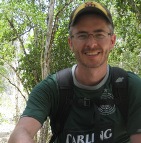Clark researchers warn: region’s glacial landscapes are ‘at risk’

According to Clark University geography researchers Deborah Woodcock, John Rogan and recent graduate Samuel D. Blanchard, the glacial landscapes of southern New England are “at risk” given current development patterns. The findings of the study “Accelerating Anthropogenic Land Surface Change: The Example of Drumlin Alteration and Loss in Southern New England” are slated for publication in the Oct. 9 issue of “PLOS ONE,” an open-access journal that publishes rigorous science research. The Clark researchers carried out a comprehensive ground-based survey in a three-town study area (Hudson, Marlboro and Stow) with the goals of establishing the extent to which drumlins have been altered and assessing the associated environmental consequences and probable driving factors. (Drumlins are glacially derived hills that formed near the periphery of the ice sheets and are largely responsible for the low, rolling relief characteristic of southern New England.)

“Our results show that many drumlins have been significantly altered for development,” said Woodcock, a research scientist at Clark’s George Perkins Marsh Institute. “They are being leveled in some cases and cut into, leaving steep cut slopes, in other cases. These alterations are of concern for a variety of reasons. At all the larger excavation sites, there were stormwater and wetlands infractions resulting in enforcement actions and fines in many cases. The broader environmental consequences of the loss/alteration of these forested uplands are also of some concern, as is the amount of earth materials being moved.” The development projects associated with drumlin modification include single-family housing, multifamily housing, corporate office buildings, and retail developments. The extensive excavations at Indian Head and Hager hills in Marlboro and Potash Hill in Hudson involved removal of large amounts of material. Rogan, associate professor of geography (who is also investigating the impacts of Asian Longhorned Beetle in Central Mass.), says he hopes the study’s findings will contribute to increased awareness of the many types of stress and irrevocable transitions that the state’s forests and landforms are undergoing at this time. Another important issue, in Woodcock’s view, is the valuation of drumlins as landscape elements and whether they should be considered part of the region’s historical, aesthetic, and geological heritage.
“The pace of change is accelerating,” said Woodcock. “Drumlins near interstate highways and in rapidly developing areas are particularly at risk. We hope that the study will contribute to a greater appreciation of our glacial hills so that their preservation can be assured. New England is renowned for the beauty of its landscapes and the fall color we all enjoy so much. It certainly won’t be the same if we flatten all our hills.” The study was funded by the Henry David Thoreau Foundation and by the Human Environment Regional Observatory (HERO) at Clark University. Samuel Blanchard worked on the project while he was a HERO fellow and throughout the time he was enrolled in Clark’s Accelerated B.A./Master’s Degree Program, earning his master’s degree in Geographic Information Science. He is currently working at UC-Berkeley as a research associate in the department of Environmental Sciences, Policy, and Management. The full manuscript of the drumlin research is available at dx.plos.org/10.1371/journal.pone.0046702.


